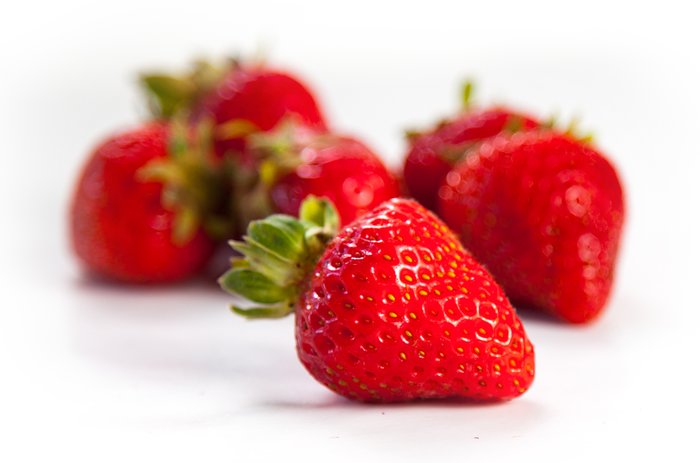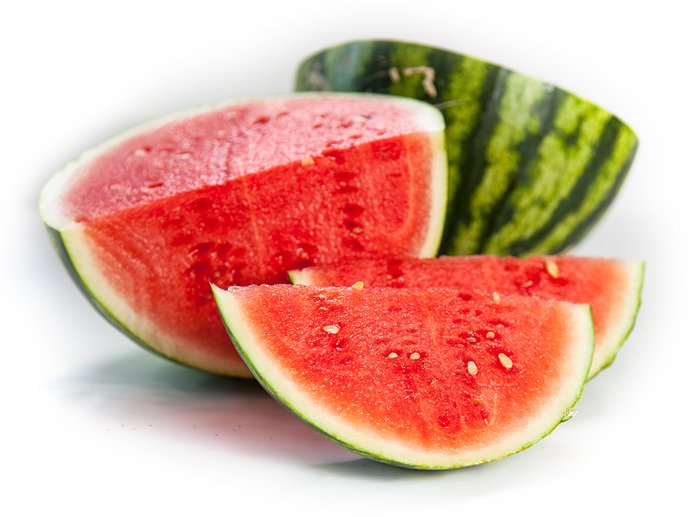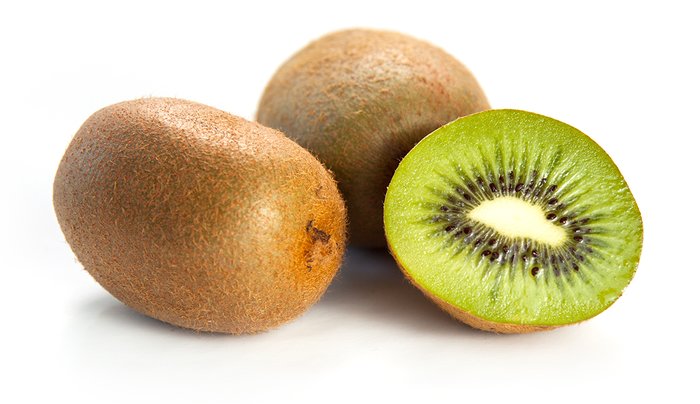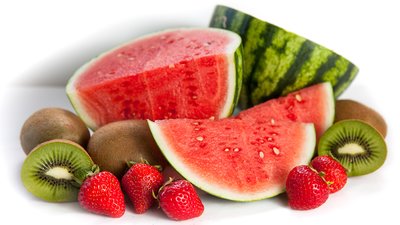You've been told to eat fruit since you were old enough to understand the words coming out of your parents' mouths. This frequent nagging continued throughout childhood, with threats that you'd stop growing or be sick all the time if you neglected these colorful foods.
But did you know that fruit can boost your performance in the gym and your recovery afterward? Increasing your daily fruit intake just might have you feeling like a kid again—full of energy, with limitless possibility. Start eating these fruits today!
1. Strawberries
Strawberries are the quintessential summer fruit; they're at their cheapest and tastiest during the early summer. Strawberries are chock full of vitamin C and rich in phenolic compounds, which have antioxidant properties.[1] This stellar combination found in strawberries has been shown to enhance blood flow throughout the body as well as disposal of free radicals.[1]

A diet high in these nutrients may help to improve clearance of free radicals generated as a result of strenuous exercise, which, in turn, means enhanced recovery capabilities after a strenuous session.
Daily Dose: Strawberries are delicious on their own, but also go well with oats, Greek yogurt, protein pancakes, or as part of your next post-workout smoothie. Consider stocking up while the price is nice, and store them in your freezer so you have plenty for the months to come.
2. Watermelon
You'd be hard-pressed to find a group of people who are all in favor of describing watermelon as "healthy." While some argue that it's a fruit rich in essential nutrients, others quickly bark that it's loaded with sugar. While both are true, I think this picnic classic should be part of your nutrition plan, especially if you're looking to finally hit a new rep PR in the gym.
One of the more popular pre-workout ingredients on the block is citrulline (or citrulline malate). Supplementing with 6-8 grams of citrulline prior to a workout has been shown to enhance blood flow, which may positively impact high-intensity performance, muscle soreness, and muscle fatigue.[2,3] This is thought to be related to citrulline's ability to increase nitric-oxide production, which, in turn, enhances blood flow to the muscles.

Watermelon rind (and the flesh, to a lesser extent) is an excellent source of citrulline. One cup of rind provides 2.5 grams of citrulline.[3,4] The rind is edible and loaded with nutrients. If you're not a fan of watermelon rind, eating the flesh all the way up to the rind, rather than leaving some visible red flesh on the end, can help you consume more citrulline.
And if you're worried about the sugar, consider that despite the 9 grams of sugar per 1 cup of diced melon, this fruit is nearly 99 percent water, which means it will promote fullness and limit you from inhaling the entire melon in a single sitting. It's also a great way to stay hydrated.
Daily Dose: Enjoy freshly diced watermelon any time of the day, or try freezing it as ice cubes to add to shakes or drinks later in the day.
3. Kiwi
The fuzzy brown fruit with the Kermit-colored inside packs a powerful punch of nutrition. Kiwis are an excellent source of vitamin K, several B vitamins, iron, and calcium. Perhaps the most impressive trait of the kiwi, however, is its vitamin C content—one kiwi contains more than 100 percent of the recommended daily value (RDA).

And while a kiwi or two pre-workout will provide you with an energy edge, kiwi's true recovery-related benefit comes at night while you sleep. A study published in the Asia Pacific Journal of Clinical Nutrition found that consuming two kiwis an hour before bed enhanced sleep quality and duration in subjects who reported trouble sleeping.[5]
This recovery-enhancing perk is thought to be related to the high level of serotonin found in kiwis, which plays a positive role in sleep onset. When you sleep better, you recover better, which will give you the energy to train hard day in and day out.
Daily Dose: Grab a kiwi and bite into it, skin and all, or consider spooning out the rich, green flesh. It also pairs well with cottage cheese or Greek yogurt, or as part of a freshly made salsa!
References
- Basu, A., Rhone, M., & Lyons, T. J. (2010). Berries: emerging impact on cardiovascular health. Nutrition Reviews, 68(3), 168-177.
- Pérez-Guisado, J., & Jakeman, P. M. (2010). Citrulline malate enhances athletic anaerobic performance and relieves muscle soreness. The Journal of Strength & Conditioning Research, 24(5), 1215-1222.
- Rimando, A. M., & Perkins-Veazie, P. M. (2005). Determination of citrulline in watermelon rind. Journal of Chromatography A, 1078(1), 196-200.
- Collins, J. K., Wu, G., Perkins-Veazie, P., Spears, K., Claypool, P. L., Baker, R. A., & Clevidence, B. A. (2007). Watermelon consumption increases plasma arginine concentrations in adults. Nutrition, 23(3), 261-266.
- Lin, H.H., Tsai, P.S., Fang, S.C. & Liu, J.F. (2011). Effect of kiwifruit consumption on sleep quality in adults with sleep problems. Asia Pacific Journal of Clinical Nutrition, 20(2), 169-174.

